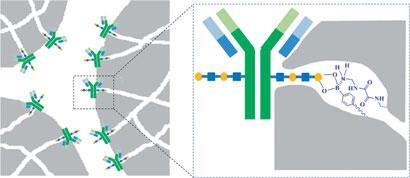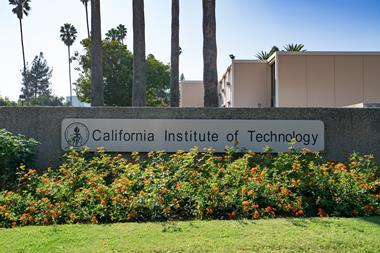Scientists have come up with a quick and cheap way to purify antibodies
A polymer functionalised with boronic acid promises a cheap and quick way to purify antibodies for disease studies, according to scientists in China.
Antibodies, also known as immunoglobulins, are used to investigate disease diagnostics and treatments. They are Y-shaped proteins used by the immune system to identify and neutralise foreign objects such as bacteria and viruses. Capturing and purifying antibodies is essential for these investigations.
The current gold standard for capturing the antibody immunoglobulin G (IgG) uses protein A - a bacterial protein that targets a region at the bottom of the Y part of the IgG molecule - in chromatography. However, disadvantages associated with this method, such as poor protein stability and harsh conditions for releasing the antibody afterwards, inspired Zhen Liu and his team at Nanjing University to look for alternatives.

By focusing on replicating protein A at a material level instead of at a molecular level, the team developed a boronic acid-diamine co-ligand system that reacts with cis-diol molecules on the antibodies’ glycan chains (at the middle of the Y) to form boronate esters at physiological pH.
They also embedded the boronic acid ligands within the mesopores of a polymer. This means that not only are the antibodies captured selectively because of their chemical functionality but also because of their size. Other glycoprotein molecules that cannot physically reach the boronic acid ligands are not retained by the polymer.
However, Frantisek Svec, an expert in porous polymer monoliths from the Lawrence Berkeley National Laboratory, US, questions the exact reasoning behind the remarkable selectivity. ’While the team claims that the mesopores contribute to the desired selectivity, the very small surface area suggests that there may not be too many of those available. However, no matter what mechanism is involved in the size exclusion, the approach is very promising for applications in biotechnology,’ he says.
Liu envisages there being many applications for this capture technology, including pre-treatment of clinical blood samples and immunoassays. ’More challengingly, successful scale-up of the polymer monolith size will allow for practical applications in antibody purification, which will be an important asset for the biopharmaceutical industry,’ says Liu.
Fiona McKenzie
Interesting? Spread the word using the ’tools’ menu on the left.
References
Y Liu, Y Lu and Z Liu, Chem. Sci., 2012, DOI: 10.1039/<man>c2sc20125a</man>






No comments yet